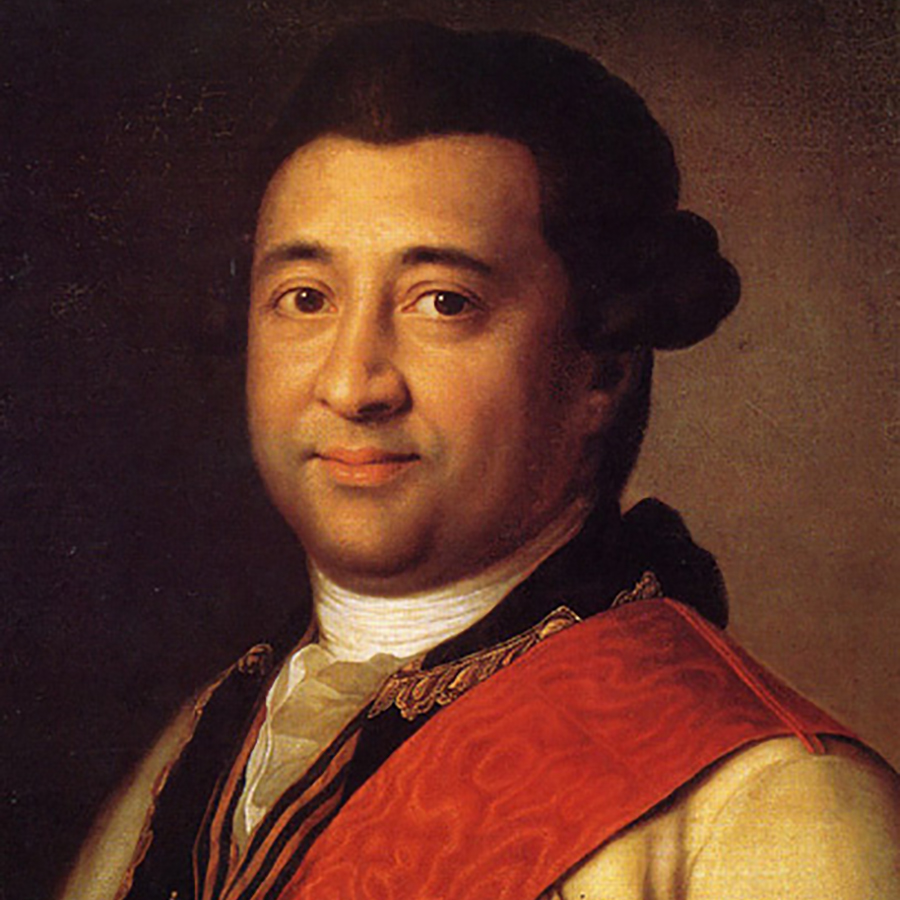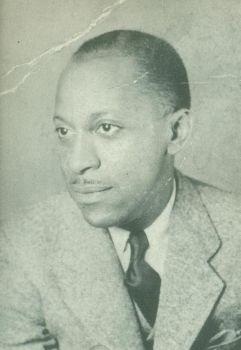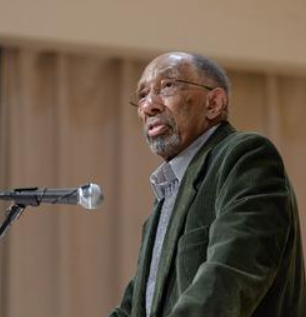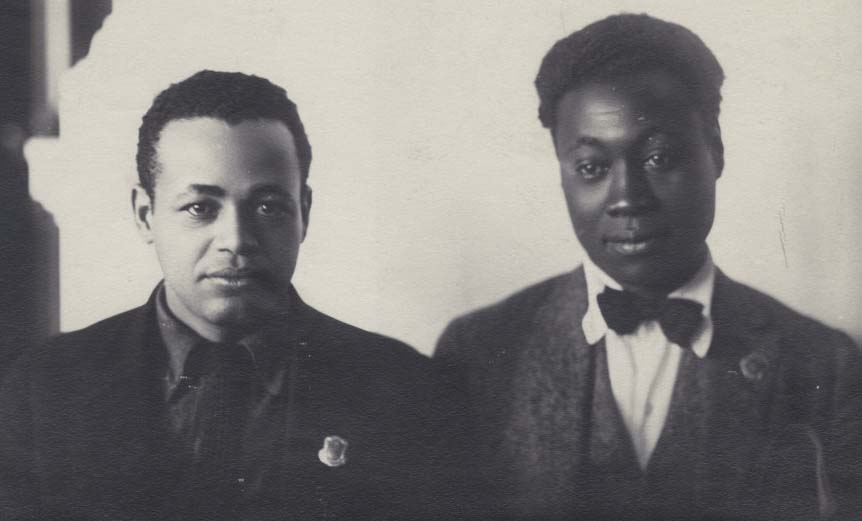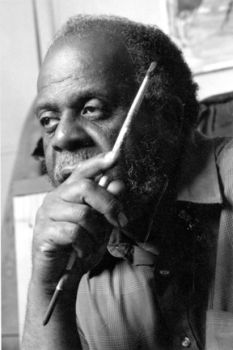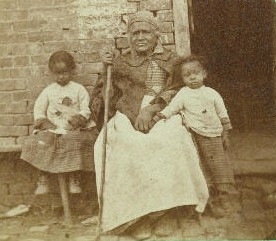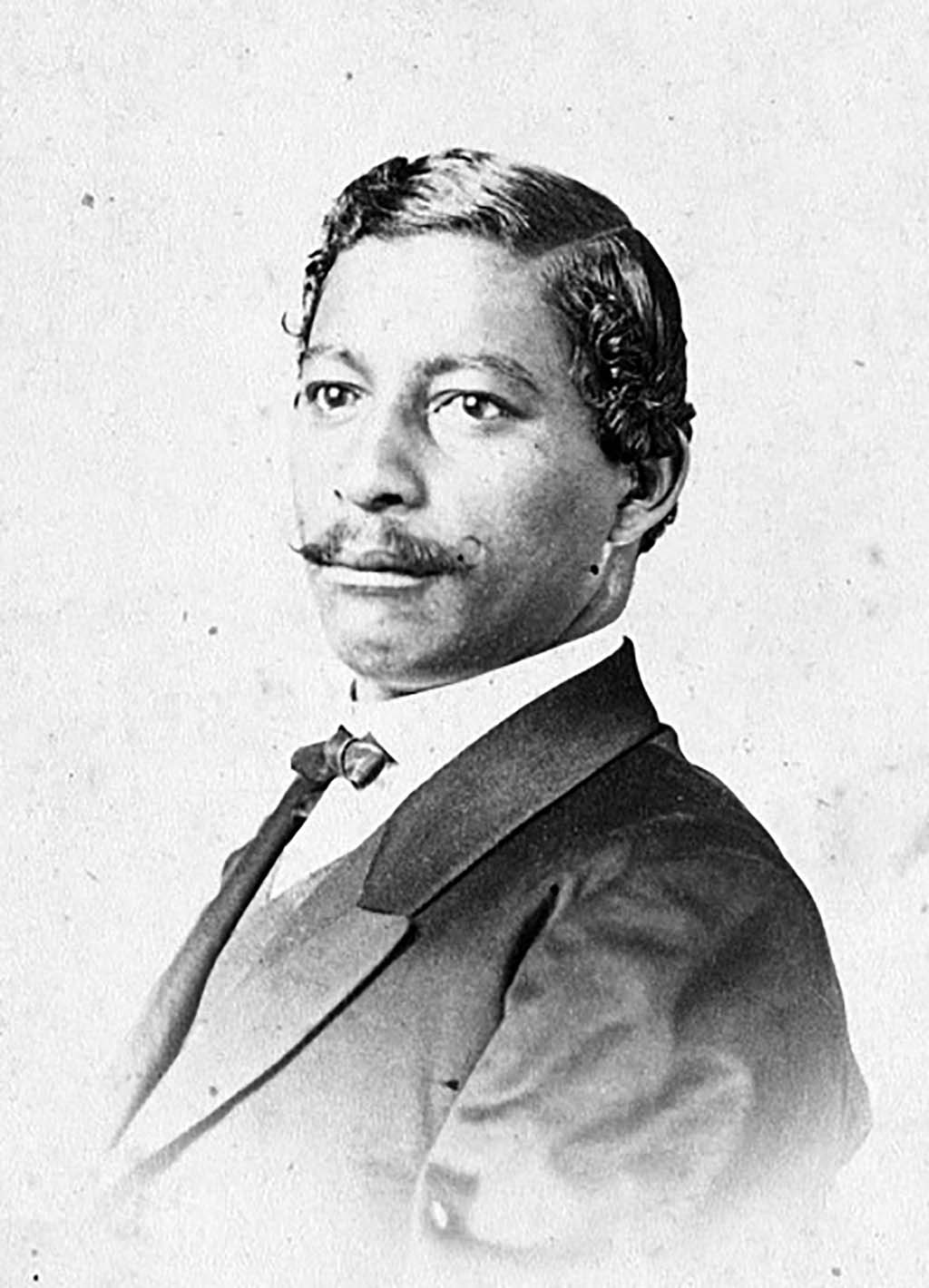In the following account, Professor Allison Blakely of Boston University describes the presence of blacks in Early Modern Europe. His article reminds us that persons of African ancestry resided across Europe. Their numbers ranged from a few hundred scattered across Germany, Scandinavia and Russia in the period between the 16th and 18th Centuries to approximately 150,000 on the Iberian peninsula. His discussion below is excerpted from a larger article written for the American Historical Society in 1999.
There is a risk in asking 20th-century questions of earlier times because today’s terms of discourse may not find a meaningful context there. It is likewise problematic to project onto European history social and cultural constructs that have evolved in the United States, and perhaps nowhere else, in quite the same form. Such is the dilemma we face in considering the influence of blacks in European history for a primarily American audience.
A discussion of the influence of black Africans on Europe and on Europeans is complicated by the absence of a universal definition of black. In general, the designation black in Europe, unlike in the United States, has been reserved for those of dark color, not the broader definition based on known black African ancestry. Consequently, awareness of a black population in Europe has been limited by the fact that when interracial marriage occurred, subsequent light-complexioned generations might never be referred to again as black. Hence the debate over whether Alexandre Dumas père, who had African ancestry through his father and paternal grandmother, was black. Consistent with the predominant European attitude, he emphatically rejected the notion that he was. Besides, in his France—as in all the other European societies—class was far more important than color, at least until the 20th century. The great Russian poet, Alexander Pushkin, who took pride in his African ancestry, shrugged off aspersions cast on that score, but took great offense at those who did not respect the centuries of nobility on his father’s side.
Is it legitimate, therefore, for a historian to count these two 19th-century literary giants as evidence of an African influence? Has racial thought in Europe had the same degree of significance as in the United States? Have blacks in Europe experienced a kind of positive “invisibility” in contrast to the destructive American type chronicled by Ralph Ellison? On the surface the European racial definition seems more egalitarian. However, the history in question suggests also the possibility of an attempt to ignore or minimize the influence of a group considered sufficiently undesirable to have been excluded by law from European countries at various times. For teachers and students of history a resultant practical problem is the absence of clear references to race in documents such as census data where it might be quite useful. Moreover, among scholars, few have found the experience of blacks in Europe to merit special attention; and even those few of African descent who have achieved high status have done so by following the accepted conventions and by avoiding drawing attention to either their African heritage or to African characteristics in their societies. This has been left to blacks in former colonies, not in Europe.
This brief essay uses selected examples from continental European societies to discuss some of the issues that must be confronted in studying the influence of Africa and Africans on continental Europe.
Africa and Africans have had an influence on European thought and culture far disproportionate to the size of the small black population (which, for example, approached 150,000 in the Iberian peninsula in the 16th century, and by the 18th Century amounted to just several thousand in France, a few thousand in the Netherlands, and several hundred scattered through Germany, Scandinavia, and Russia. Only in the 20th century would the combined numbers reach the hundreds of thousands. The most striking example of that disproportionate influence can be seen in the 20th century, in Soviet Russia, which as part of its messianic role chose Black Africa and blacks in America as symbols for the Communist championing of the downtrodden; elected blacks as honorary members of the Moscow City Council; and named a mountain after Paul Robeson.
Three interesting examples of people of African ancestry who had distinguished careers in Germany, Russia and the Netherlands suggest the ways in which race is mediated in Modern Europe. The first, Anthony William Amo, gained fame in Germany for his philosophical studies. Born on the Gold Coast around 1700, he was taken to Amsterdam by the West India Company when he was about 10 years old and was presented to the Duke of Wolfenbüttel. He was baptized in Wolfenbüttel in 1707 and given the names Anton and Wilhelm in honor of the reigning duke and his son. A grant from the duke allowed Amo to be educated to a point where he was able to enter the universities at Halle, in 1727, and Wittenberg, in 1730, where he became skilled in Latin, Greek, Hebrew, French, German, and Dutch and concentrated on philosophy. In 1734 he was awarded the doctorate degree from the University of Wittenberg with a dissertation on “De humanae mentis apatheia” (“On Apathy in the Human Mind”). In his philosophical work he was a rationalist, devoting special attention to mathematical and medical knowledge in the context of Enlightenment thought. He became a lecturer at the University of Halle and later at the University of Jena until the 1750s.
Among the few fairly prominent black figures in Dutch history who at least briefly caught the public eye, the earliest was the former slave Jacobus Capitein, so named because a Dutch captain brought him to Leiden, where he was put into school, mastered several European languages, and eventually became a predicant (preacher) after completing theological training at the University of Leiden in 1742. He became famous as author of a treatise that defended slavery as an avenue to redemption for Africans. His portrait, circulated widely, advertising that blacks could be transformed by Christianity and Western civilization. Prior to going off to what was to prove a disastrous mission in his homeland on the Gold Coast, he preached a number of times in Holland to audiences who flocked to see this novelty.
The first black to attain high recognition in Russia was Abram Hannibal, the African slave who became a favorite of Tsar Peter the Great and was the maternal great-grandfather of Pushkin, the single most revered figure in all of Russian culture. Brought to Russia at the beginning of the 18th century as part of a group of young black prospective servants, Hannibal, under the tsar’s sponsorship, went on to attain a high level of education in France and, after returning to Russia, eventually advanced to the rank of major general in the army engineers. He brought back to Russia a personal library of 400 books, one of the largest and most up-to-date in the empire, and himself published a two-volume compilation on geometry and construction techniques. The owner of several estates, complete with serf labor, he served from 1743 to 1751 as Commandant of the city of Reval (in Estonia) on the Baltic. He later directed major canal and other construction projects.
There were persons of African ancestry who achieved distinction in Moorish Iberia and later in Spain and Portugal, the European societies that first saw a large influx of blacks. Most of these notables were mulattos: for example, Cristóbol de Meneses, a Dominican priest; the painters Juan de Pareja and Sebastian Gomez; and Leonardo Ortiz, a lawyer. Among the few dark-skinned blacks who achieved high status was Juan Latino, a slave from Africa who through his master’s benevolence was educated at the University of Granada. There were also some other signs of respect for blacks during these centuries. In 1306 an Ethiopian delegation came to Europe to seek an alliance with the “King of the Spains” against the Moslems. King Anfós IV of Aragon considered arranging a double marriage with the Negus of Ethiopia in 1428. And the Portuguese sent Pedro de Corvilhao to Ethiopia in 1487 on a similar mission.
Meanwhile the actual living experience of blacks in Europe appeared to be marked by smooth integration into European society, with the role of lower-class blacks determined very much by that of their masters or employers. The 140,000 slaves imported into Europe from Africa between 1450 and 1505 were a welcome new labor force in the wake of the Bubonic Plague. On the whole, blacks in Christian Iberia were not limited to servile roles; but they were also not influential as a group. The new slave population in Portugal worked in agriculture and fishing. Free blacks living in Loulé and Lagos in the southern edge of Portugal owned houses and worked as day laborers, midwives, bakers, and servants. Most were domestic servants, laborers (including those on ships and river craft), and petty tradesmen. Some free blacks, especially women, became innkeepers. Blacks in Spain served as stevedores, factory workers, farm laborers, footmen, coachmen, and butlers. Male and female domestics apparently lived well compared to other lower-class people. Slaves could work in all the crafts, but could not join the guilds. A few Africans active in the Americas during the early Iberian expansion were among returnees to Portugal and Spain from America and Africa from the 16th to the 18th centuries. These included free mulatto students, clerics, free and slave household servants, sailors, and some who attained gentlemen’s status. The use of many black women slaves as domestics and concubines led to mulatto offspring who received favored treatment, and in some instances, attained middle-class and even aristocratic status.
In surveying the later experience of blacks in the northern, central, and eastern European societies, there is a striking similarity to the patterns in Iberia, but with smaller populations before the 20th century. In those societies it became fashionable for the wealthy to employ blacks as house servants and in ceremonial roles such as military musicians. The Dutch entry into the African slave trade, beginning in the 17th century which eventually accounted for the removal of about half a million Africans to the Americas, magnified the image of blacks as a servile race in Dutch society. This was one of the factors increasingly reinforcing a low esteem for blacks in other parts of Europe as well by the 18th century.
The basis for denigration of blacks must also be sought, however, in underlying notions within European cultures. Images of blacks and attitudes about blacks were present in Europe long before there was a significant physical presence. In visual arts, religion, epics, and legends, the Middle Ages provide a fascinating array of vivid illustrations of this point. There is a persistent pattern of ambivalence in the attitudes of white Europeans toward blacks that has survived over the centuries, always containing both positive and negative features, but usually tilting toward the latter. Imagery based upon religious themes illustrates especially well the ambivalence in question. Black saints were proclaimed in parts of medieval Europe when the Holy Roman Emperors, beginning with Charles IV’s ascension in 1346, adopted blacks into the iconography of their realm. The statue of St. Maurice in the chapel of St. Kilian at Magdeburg and the 17th-century bust of St. Gregory the Moor at the church of St. Gereon in Cologne testify to the strength of these notions. This special recognition aimed not only to acknowledge the contribution of African martyrs to the Christian cause, but also to amplify the scope of the German emperor’s realm and affirm the relevance of Christianity to all peoples.
Yet even some of the most beautiful art depicting blacks had darker undertones. The Adoration of the Magi was the single most popular religious theme featuring blacks in European art. The black king, handsome with noble bearing, was usually depicted as the youngest, presumably symbolizing Africa as the continent just beginning to participate in world affairs. This hint at backwardness is of course the negative aspect. Another biblical theme with a similarly ambiguous message was that surrounding the baptism of the Ethiopian eunuch, described in a passage of the Book of Acts. Although this may be interpreted as celebrating a missionary role for Christianity, it also implies European cultural superiority. Moreover, this theme becomes even more negative when it is associated with a popular symbol derived from a passage in the Old Testament Book of Jeremiah, where the impossibility of an Ethiopian changing his color is mentioned in a discussion of sin and punishment (Jeremiah 13: 22-25). In the emblematic tradition widely published in western Europe during the early modern period, a “washed Moor” was the symbol for futility.
The Hamitic legend is an older and better known religious theme bearing a negative connotation for blacks. The convergence of this legend (as well as that on the Ethiopian baptism) with the rise of the African slave trade represents just the type of historical fusion that can help explain the depth of modern racism’s roots: that is, myth seemingly confirmed by experience. Other imagery concerning blacks drawn more from the historical experience than from imagination might be cited from epics, legends, and literature. An illustrative medieval literary work is Wolfram von Eschenbach’s Parzifal, drawn from the legend of King Arthur and his court, which evolved for centuries in England, France, Germany, and the Netherlands. The images of the blacks in the story are at times positive and at others negative, sometimes noble, at others ridiculous. Also, precursing a familiar theme of the present day, the males have uncontrollable sexual appetites. The depiction of blacks as tormentors and sexual symbols was also popular. Among Satan’s titles in literature and folklore were the names “black knight,” “black man,” “big Negro,” “black Jehovah,” and “black Ethiopian.” Such figures as Ruprecht and Black Pete (Zwarte Piet), the sometimes benevolent bogeymen who accompany the Saint Nicholas figure in the Christmas celebrations in Germany and the Netherlands, show that the ambivalence persists.
In the 19th and 20th centuries the apparent assumed inferiority of blacks would become cloaked in supposedly scientific racist theories, such as those of Joseph Gobineau and Adolf Hitler. Reservations about the character of blacks, even when not spoken, have been among the reasons for limiting entry of blacks into Europe and for opposing racial mixture. The ambivalence of Europeans, like their white American counterparts, toward equal acceptance of blacks in few fields other than sports or music reflect deeply embedded stereotypes that have continued to overshadow the real role of blacks in European history and culture.




